Asian Vanity by Todd Fillingham.
–
I have often been asked to design a piece of furniture in an antique Asian style. The image above is an example of a vanity I designed and made for a client’s Asian themed powder room. The project came to me as simply a need to have something that would work as a vanity and fit into the theme of the room. I worked with the interior designer who had done the original design of the room. She had already picked out the counter top material, bowl and plumbing fixtures.
It is not unusual for me to be asked to come up with an idea for something that does not already exist in some form. There isn’t much in the way of antique Asian vanities available. It was also necessary to have the vanity fit certain dimensions, it had to fit the copper bowl that was to be used, yet not be too large for the limited space of the vanity.
Here’s the piece with the top, bowl and plumbing fixture.

Asian Vanity by Todd Fillingham
To create a design I consulted a couple of my favorite reference books for Asian furniture design. This design was derived from an image of a Chinese ice box shown in “Chinese Household Furniture” by George N. Kates, copyrighted 1948. The other book I use frequently is “Japanese Homes and Their Surroundings” by Edward S. Moore, originally published in 1886. My copy is a Dover edition copyrighted 1961.
It is from these books that I have learned about various motifs that are common among much of antique Asian furniture as well as proportions and function.
Kates notes that filled with ice “very large, almost giant, models of this same type were also placed in the apartments of the Summer Palace, as late as the time of the last Empress Dowager, merely to freshen the air when she was in residence.”
A design motif that is characteristic Asian is the “horsehoof” legs of the stand. I would say that the brass bamboo trim also reads as Asian. I fabricated all of the brass work in this piece save the handle.
I designed another piece that used the horsehoof legs as well.
This is a rendering I created as part of the design process for this project, which was to be a table to hold a piece of carved jade. The line drawing may show the horsehoof elements a little better.

This project eventually took a turn to another style and here is a rendering of the piece I eventually made for the client.

One of earliest projects that was influenced by Asian styles was a room divider screen I designed for clients for whom my partner in Woodcrafter’s Remodeling at the time and I were remodeling a condo unit for. We had installed a pair of skylights and they wanted a screen to block the glare of the afternoon, summer sun. I dug up an old slide of it and used my new and improved slide scanner (more on that later) to digitize it.

This reminds me that I have also done several shoji style doors over the years. I’ll have to dig back into my archives to find some images of those for a later post.
This screen was an example of designing and making a piece that was to function as an original, antique piece may have. As I mentioned above, I am often asked to create a piece that will a decidedly more contemporary function. Another project along those lines was a set of bookcases I created. The client wanted antique Asian style bookcases, but there are really none available. She was an informed and avid collector of antique Asian furniture. I had repaired an antique table for her so I was asked to create the bookcases.
I chose to create the “antique Asian” style by using the cloud rise or what is sometimes called mist motif, rounded sections in the frame structure and a finish scheme similar to other, truly antique, pieces she had collected. I opted to create a pseudo red-lacquer however in order to keep the project within my clients’ budget. I used red tinted shellac. I also tinted the shellac for the brown interior elements and the shading used to age the piece.

You can see in this detail shot of one of the bookcases the polychrome elements as well as some of the rounded sections. By placing two rounded rail like sections together, in this case the top of one unit and the bottom of the other unit I created a look very similar to another Asian motif, the double rounded rail.

This image shows the trim at the top that uses the cloud rise motif.
Another project I recently designed was a desk and dresser set that was to have an Asian look.

The black color was to tie in with other elements of the room. Here you can see the use of another design element common in Asian style furniture, the round leg joined in a bird’s mouth miter with a round rail as well as reference to the cloud rise motif in the bracing rails.
There are many challenges in designing furniture to fit a particular style, especially if the function of the piece needs to be updated. Often traditional designs typical of old or even ancient cultures have elements that are very useful within the broad vernacular the work was being made in and used for. Techniques and tools were passed down for generations. It was made this way because it had always been made this way. Our culture is little different. Think of the common 2 x 4 used in carpentry. My challenge includes using early 21rst century materials and tools as well as the skill set I have acquired in the late 20th century to design and create work that reflects the work of a wide variety of designers and builders from very distinct and different cultures.
I will post shortly about working in the Biedermeier style, a style and method of construction very different from antique Asian furniture.
 ::
::  ::
::  ::
::  ::
::  ::
::  ::
::  ::
::  ::
::  ::
::  ::
::  ::
:: 
 This chair was designed to look like a Biedermeier chair for a bedroom set I had done in that style. I took this basic chair, changed the dimensions to the ones we had worked out with the client to get the seat height just right and created this first design.
This chair was designed to look like a Biedermeier chair for a bedroom set I had done in that style. I took this basic chair, changed the dimensions to the ones we had worked out with the client to get the seat height just right and created this first design. The client didn’t think that this was what she was looking for so it was literally back to the drawing board for me. I realized that the client had the sense that the chair wasn’t sturdy enough and didn’t offer enough support. That led me to create this next design.
The client didn’t think that this was what she was looking for so it was literally back to the drawing board for me. I realized that the client had the sense that the chair wasn’t sturdy enough and didn’t offer enough support. That led me to create this next design. The client said that this was perfect.
The client said that this was perfect.










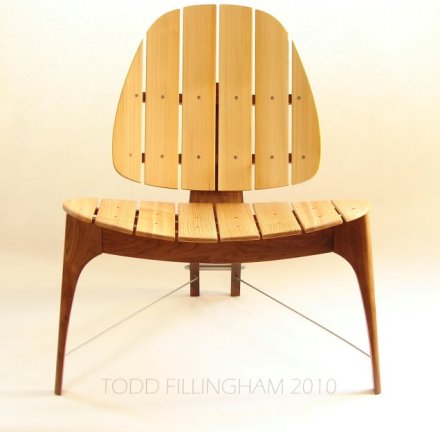

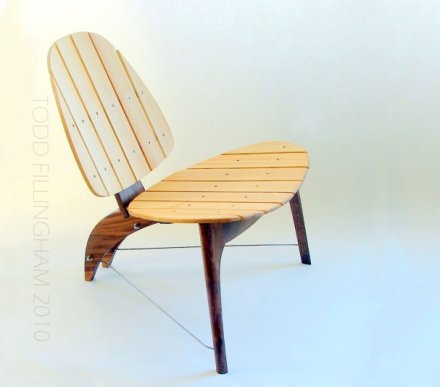
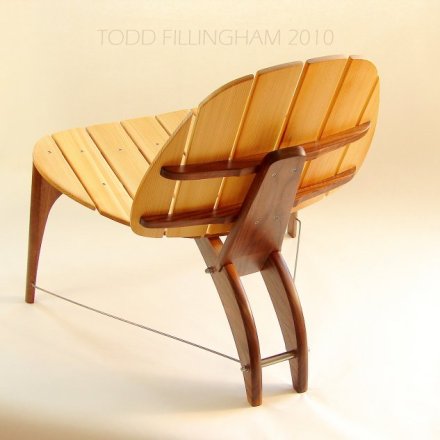
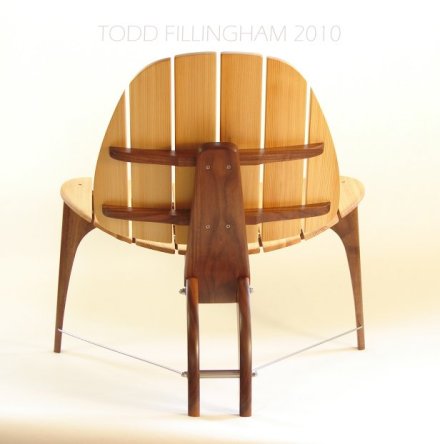














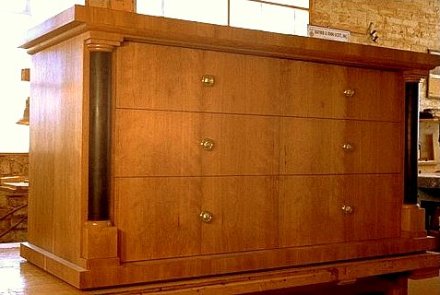





















































 I use Rhinocerous nurbs modeling for Windows to create the models and Flamingo for rendering.
I use Rhinocerous nurbs modeling for Windows to create the models and Flamingo for rendering.

